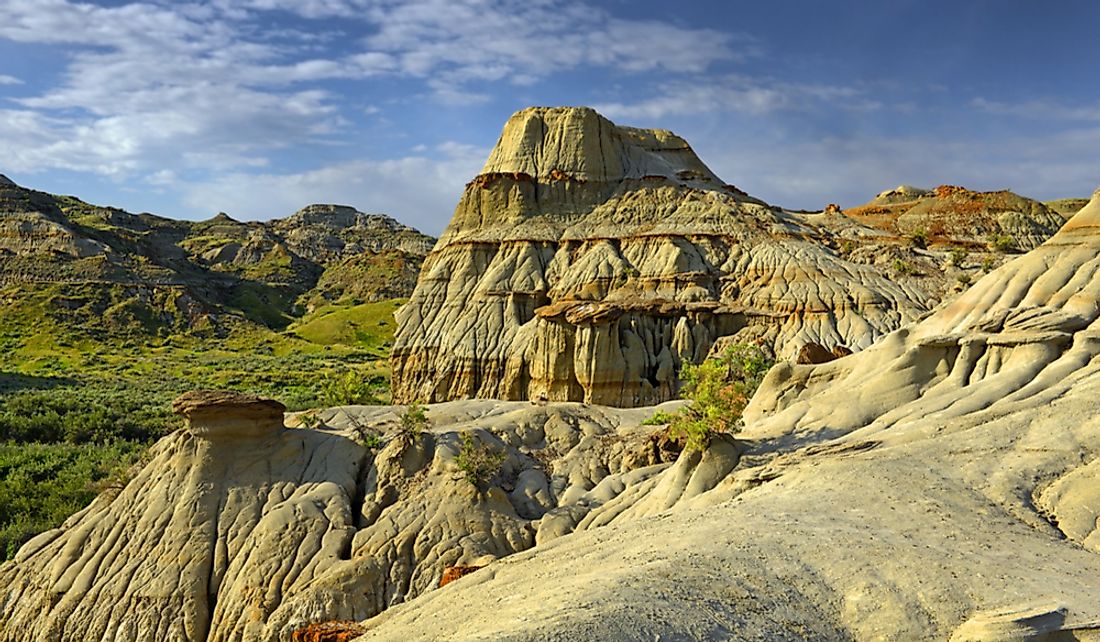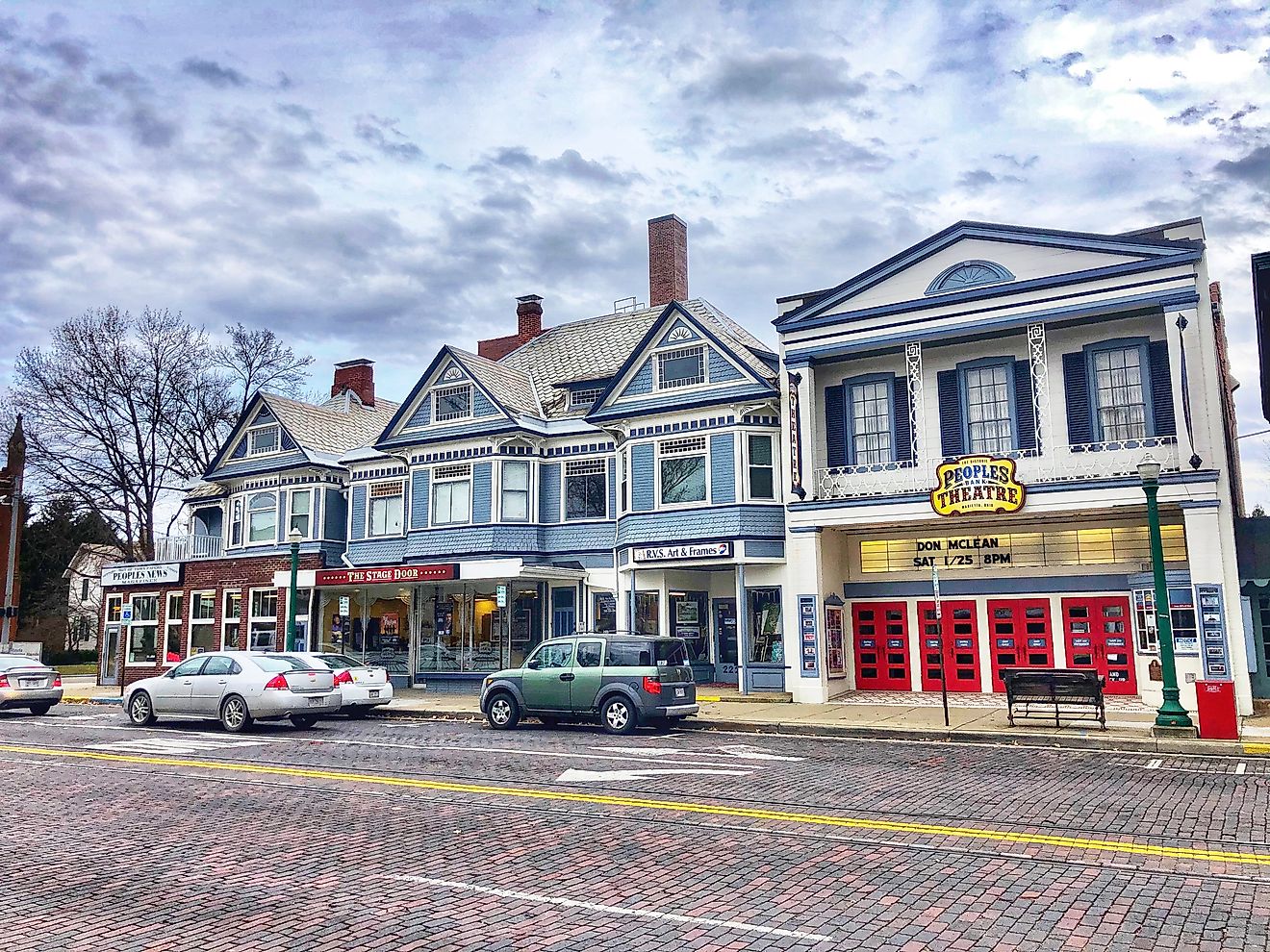Canadian Provinces/Territories With The Highest Number Of UNESCO World Heritage Sites

Canada is a beautiful country with great geographical and cultural diversity. The thriving tourist industry of Canada is based on its numerous historical, cultural and natural attractions. Canada also has 19 UNESCO World Heritage Sites. These sites are landmarks or areas that have been selected by the UNESCO as having immense historical, cultural, conservation, scientific or other value. They are considered to be important to the interests of humanity. The presence of these sites of international significance often acts as a tourist magnet. The Canadian provinces and territories with the highest number of UNESCO World Heritage Sites are Alberta with 4, Newfoundland and Labrador with 4, British Columbia with 3, and Nova Scotia also with 3 sites.
6. Alberta
The western Canadian province of Alberta has five UNESCO World Heritage Sites. Two of these sites are shared with two other Canadian provinces while one is shared with a US state. The Canadian Rocky Mountain Parks World Heritage Site is shared between Alberta and British Columbia. Four national parks and three provincial parks of British Columbia are part of this site. Mountains, glaciers, headwaters of major Canadian rivers, and hot springs characterize the landscape of the region. The Wood Buffalo National Park is shared between Alberta and Northwest Territories. It is the country’s biggest national park and protects the world’s largest herd of free-roaming wood bison. The Waterton-Glacier International Peace Park straddles the border between Alberta and US state of Montana. It was formed by the union of two national parks, Canada’s Waterton Lakes National Park and America’s Glacier National Park. Head-Smashed-In Buffalo Jump and the Dinosaur Provincial Park are two UNESCO World Heritage Sites that are exclusively within the territory of Alberta.
5. Newfoundland and Labrador
Newfoundland and Labrador, Canada’s most easterly province, is home to four UNESCO World Heritage Sites. These include the Red Bay (underwater archeological site), L'Anse aux Meadows National Historic Site (an archeological site), Mistaken Point, and the Gros Morne National Park. The former two places are cultural sites while the latter two are natural ones. The Gros Morne National Park is a geological treasure that illustrates plate tectonics. The numerous glacial features of the park contribute to its natural beauty. The Mistaken Point, on the other hand, is a paleontological treasure trove housing some of the most ancient fossils of multi-cellular life on Earth.
4. British Columbia
British Columbia has three UNESCO World Heritage Sites. One of these sites, the Canadian Rocky Mountain Parks, is shared with Alberta as mentioned earlier. The Kluane / Wrangell-St. Elias / Glacier Bay / Tatshenshini-Alsek is another such site that straddles the borders between Alaska in the US and Yukon and British Columbia in Canada. The area hosts an impressive complex of tall peaks and massive glaciers. Considerable populations of grizzly bears, Dall’s sheep, and caribou are found there. The SG̱ang Gwaay is a heritage site of the Haida people.
3. Nova Scotia
Nova Scotia, a Maritime Atlantic province of Canada, has three UNESCO World Heritage Sites. The Joggins Fossil Cliffs is famous for its fossils from an ancient rainforest ecosystem. The Old Town Lunenburg and the Landscape of Grand Pré are two cultural World Heritage Sites in the province.
2. Other Canadian Provinces with UNESCO World Heritage Sites
Quebec, Ontario, and the Northwest Territories each have two such sites. The Historic District of Old Quebec and the Miguasha National Park are two of Quebec’s UNESCO World Heritage Sites. Pimachiowin Aki and the Rideau Canal are the two World Heritage Sites in Ontario. The former is shared between Ontario and Manitoba. The Wood Buffalo National Park and the Nahanni National Park are two such sites located in the Northwest Territories. The former is shared with Alberta. Manitoba and Yukon have one such site each, as mentioned previously.
1. Canadian Provinces/Territories that Lack UNESCO World Heritage Sites
Out of the 13 provinces and territories of Canada, New Brunswick, Prince Edward Island, Saskatchewan, and Nunavut do not have any such site. However, Nunavut and Saskatchewan have sites listed in the tentative list of UNESCO World Heritage Sites from Canada.
Canadian Provinces/Territories With The Highest Number Of UNESCO World Heritage Sites
| Rank | Province/Territory | Number of UNESCO World Heritage Sites |
|---|---|---|
| 1 | Alberta | 5 |
| 2 | Newfoundland And Labrador | 4 |
| 3 | British Columbia | 3 |
| 4 | Nova Scotia | 3 |
| 5 | Ontario | 2 |
| 6 | Quebec | 2 |
| 7 | Northwest Territories | 2 |
| 8 | Yukon | 1 |
| 9 | Manitoba | 1 |
| 10 | Nunavut | 0 |
| 11 | Saskatchewan | 0 |
| 12 | Prince Edward Island | 0 |
| 13 | New Brunswick | 0 |











